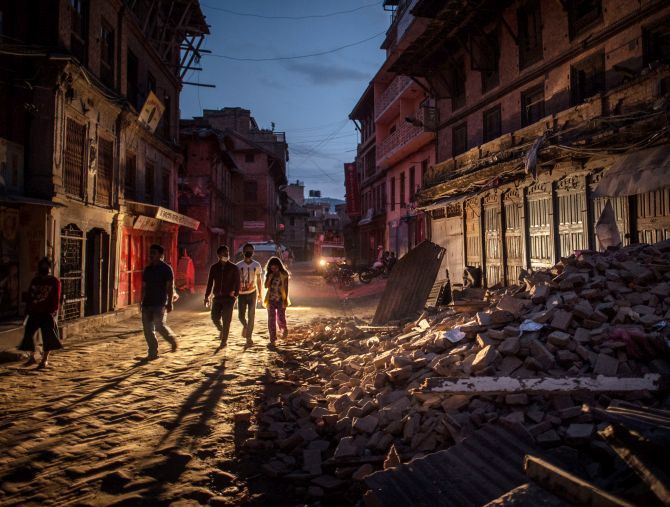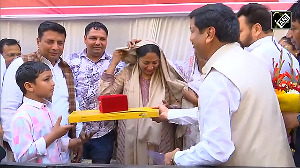
Nepal’s Rastrapati Bhawan, a British-era structure, has been declared unsafe for use by a technical team after the building developed cracks due to the devastating temblor.
The rear part of the presidential building, popularly known as ‘Sheetal Niwas’, has been declared unsafe for use by technicians from the Department of Urban Development and Building, according to an official.
Following a safety assessment, technicians put red stickers to the rear part of the residence. It should now be demolished and rebuilt, they advised.
The engineers’ teams classify the houses in three categories -- the house with a red mark is not suitable for stay, with yellow mark needs maintenance and those marked with green colour are appropriate for living.
The building developed cracks after the powerful April 25 earthquake that has killed 7,652 people.
Only four rooms of the residence were declared fit for use. All other rooms were marked with yellow stickers. Technicians have said that these rooms should not be used for safety purposes.
President Ram Baran Yadav has moved to a safer place following the incident. He had stayed in makeshift tents for six days after cracks appeared on the residence due to the temblor.
Over 2,000 engineers were deployed voluntarily to check safety of houses in the aftermath of the temblor, the country’s worst in over 80 years, and have checked over 13,000 so far, half of which are unsuitable to live or require renovations.
Built by Rana Prime minister Chandra Shamsher for his son Krishna Shamsher in 1923, it was handed over by Krishna Shamsher Rana, a Rana aristocrat, to the Government of Nepal in 1961. The government decided to make it the presidential residence in 2008.
Image: People walk past debris on May 3, 2015 in Bhaktapur, Nepal. The death toll in the quake has rise to 7,652 people. Photograph: David Ramos/Getty Image







 © 2025
© 2025